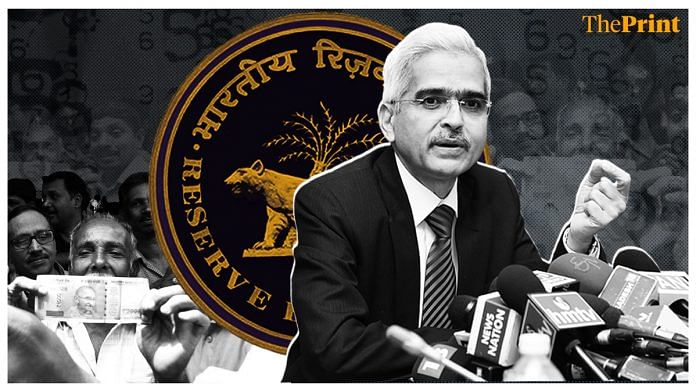Many of us may have heard of a regime of “rising interest rates” in the last few months. Those of us with home loans may also have seen that the duration of our loans has increased — instead of asking us to pay higher EMIs, banks have increased the number of months for which the loan will continue. On 18 August, the RBI came out with a circular that asks banks and NBFCs to provide the option to the borrowers to switch over to a fixed rate as per their Board approved policy. The circular also says that banks and NBFCs should ensure that elongation of tenor in case of floating rate loan does not result in negative amortisation. These changes have to be implemented by 31 December 2023. The policy says a lot on what the RBI is worried about, and what it might mean for retail credit market. The RBI may need to devise measures to deal with an increase in stress on the home loan portfolio of banks, as well as worry about consumer protection issues in the credit space.
Also read: Modi can’t prove India is 5th largest economy. Data will fail him
Loan book and interest rates
We are facing a rising interest rate cycle for the first time in several decades. Banks are preferring to increase the overall tenor of the loan instead of the EMI as it is easier on the individual. But the term of the loan for many borrowers may go beyond the age of 60, or despite paying the monthly instalments, borrowers may find the amount owed to the bank going up because the existing EMI is not enough to cover the interest. The RBI in its circular has asked banks to make sure that the elongation of the tenor doesn’t lead to this situation. This implies that banks will have to increase the EMI. This may mean that the stress on many homeowners increases, and that some of these may go bad in the coming years.
Over the last decade, the lending portfolio of banks has shifted to retail loans. In FY2013, share of industry in total banking credit was 42 per cent. By FY2023, it had dropped to 25 per cent. The retail book (consisting of personal loans) on the other hand, has grown. It stands at 28 per cent of total banking credit. There is, in fact, an almost exact reversal between industrial loans and consumer loans in incremental bank credit in this period. The top category in personal loans is that of home loans, at 14 per cent, followed by vehicle loans at 3 per cent. While bank profitability has risen, and it seems that the period of non-performing assets (NPAs) is behind us, there are concerns about the rise in NPAs on these new retail loans. There is an expectation that gross NPAs for the micro, small and medium industries will rise by 10-11 per cent next year. There may also be impending stress on home loans. The last decade of the banking sector has seen loans going bad, ever greening of loans, limited success of restructuring schemes and eventual write-offs. It is important to not repeat the mistakes of the past, and confront the bad news through adequate provisioning, and capital enhancements should it come to that.
Also read: Adani to HCL, Sri Lanka riding high on Indian capital. Modi’s new regional order is working
Floating vs fixed: Can the customer choose?
Banks give home loans over a 15-25 year horizon. Lots can change in this time period. The world can go from a time of peace to a period of war. Economies can go through a boom and bust cycle. A floating interest rate allows banks to price loans such they charge a lower interest rate when times are good, and increase rates when times go bad. Since this flexibility is not there in the case of fixed interest rates, they are usually higher than the floating interest. Even if banks were to provide the option to go back to a fixed interest rate from next January, these are likely to be higher than the floating interest ones.
The larger question is, whether there is a meaningful way in which consumers can make an informed decision on whether to choose a fixed or floating interest rate at the time of taking a loan, and later in the cycle of the loan, if the option is given. This brings us to the complex question of consumer protection in finance, and in credit markets in particular. It is difficult to envisage the future of interest rates, evaluate the impact that a floating interest rate may have on one’s finances in the next decade, and decide if it makes sense to go for the higher fixed interest rate today. One can make consumers aware of the risks of a floating exchange rate regime, but choosing the best option is an advisory function that banks may either not be incentivised to play, or be reluctant to play. A third-party financial advisory market that works in the interest of consumers has not developed in India. This leaves the RBI in a situation where it may not be able to do much more in helping consumers make the correct decision for themselves.
Renuka Sane is research director at TrustBridge, which works on improving the rule of law for better economic outcomes for India. She tweets @resanering. Views are personal.
(Edited by Anurag Chaubey)



